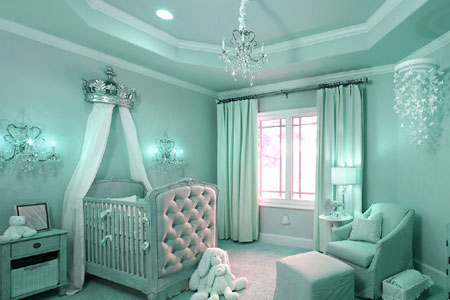
Home staging a nursery is always a great way to increase the value of a baby room when selling any piece of residential real estate. Nurseries can be assets or deterrents to the sales process, depending on the type of property offered, the target buyer demographic and the specific room characteristics. However, utilizing home staging in a nursery will always help to improve the appeal of the space, regardless of the other criteria that might be used to ascertain the overall value of the room.
Since most nurseries are small and simply decorated, staging this room should be fast and easy. Actually, nurseries are great places for sellers to save some money by using simple DIY staging practice to enhance the space without much effort or monetary investment.
This guide provides a tutorial on preparing a nursery to receive prospective buyers when a home is placed on the market for sale.
Home Staging a Nursery Tips
Nurseries are generally diminutive rooms that feature very little in the way of furniture. In fact, most only contain a crib, some storage, a changing table, a nice comfy chair and maybe some other small furnishings. We advise keeping the room simple in its design sense, with just enough furniture, art and accessories to make it feel inviting, but not cluttered or cartoon-like.
Color is a major factor in nurseries. We know that many people gravitate towards bright pinks, blues or yellows, but these are not the best choices. It is far more appealing to paint a warm neutral color inside the room and allow the accessories to dictate the gender theme, since these are removable and do not create added work for a prospective buyer.
Nurseries are best staged in the smallest of bedrooms and should not replace more appealing options when other choices are available. A guest bedroom or home office is a much more universal buyer-pleaser than a nursery, so never replace one of these uses with a baby room design. Instead, only dedicate a room to baby if there is a small bedroom that will even disappoint as a small office.
When a nursery is already in place, be sure to maximize its limited appeal by making it super-inviting for any parent to spend quality time with their new born infant. To this end, we recommend placing some tranquil music in the room, adding a rocking chair and keeping the lighting as natural as possible.
Problems Faced When Staging a Nursery
The primary and fundamental problem with staging a nursery is that these rooms rank low on buyer wish-lists, especially when compared to other comparable room applications. Therefore, unless you are specifically courting a young family demographic, keeping any room set up as a nursery might be ill advised.
If you have a baby, there is no reason why the room can not be changed to a more universal design, such as an office or guest bedroom. The crib can remain inside, but the effect of the décor change will become more attractive to most buyers. When buyers come to visit, the crib can simply be moved in to the master bedroom, if desired.
Color is an important point of consideration in a baby’s room. So many people paint obvious gender-specific tones throughout the room or place decorative borders or murals in the room to make it cuter. Remember, your baby does not benefit from these designs nearly as much as the parents do. They are really not needed when a house is for sale. There is plenty of time to add taste-specific elements in your new home once this sale is wrapped up.
Clutter is also a big problem in many nurseries. Babies tend to attract lots of gifts and these items must all find a home. In my experience, that home is usually all over the floor, walls and shelves of an already tiny nursery, enacting a totally confusing cluttered mess. Minimize clutter by packing away lots of baby items along with other nonessentials in a dedicated storage space until the house is sold.
Home Staging a Nursery Summation
Nurseries offer a potentially good functionality option for rooms that are really small and obviously suit the needs of a baby perfectly. Lots of home sellers have infants, but can still find a space to keep them happy and content until the house is sold, without having to dedicate a complete room to a very limited purpose (in buyer’s eyes).
Of course you love your child and want him or her to be happy. However, since the sales process will not be too long, they will be just fine without all the things that one might see in a traditional kitschy nursery environment.
In summary, if you do decide to leave a nursery decorated in a traditional sense, please follow my guidelines for giving it class and more universal appeal. These small changes can really make gigantic positive impacts on how buyers will view your home.




